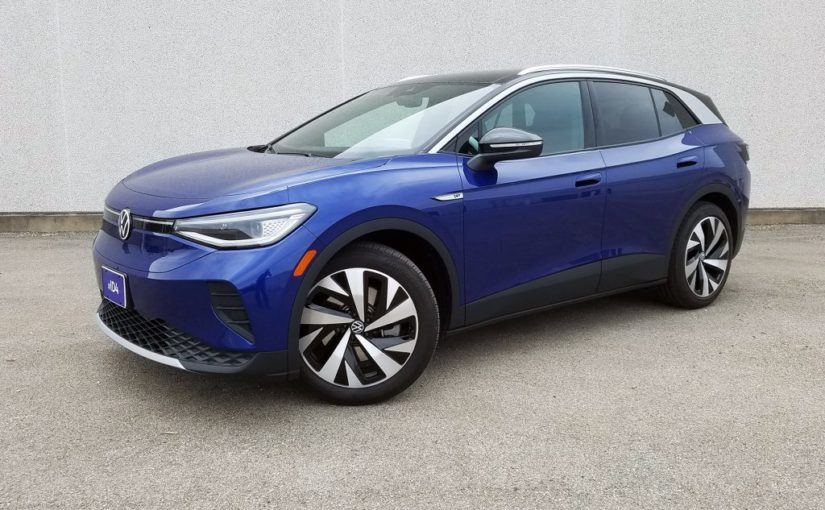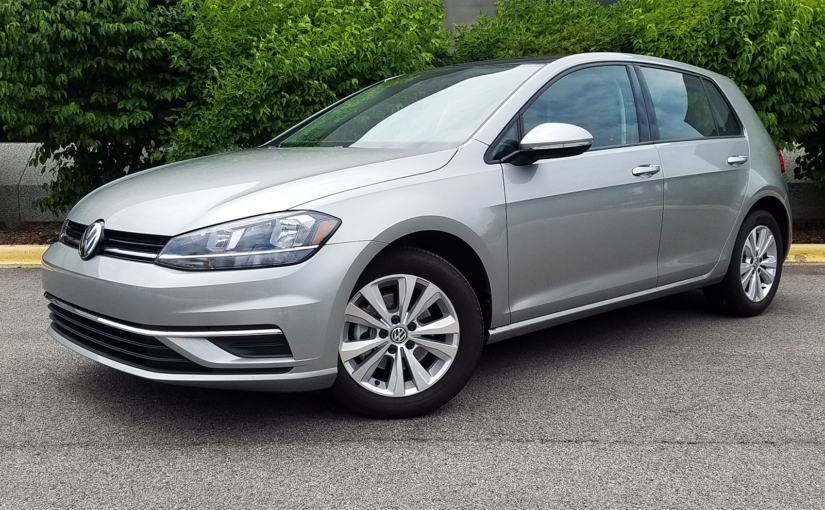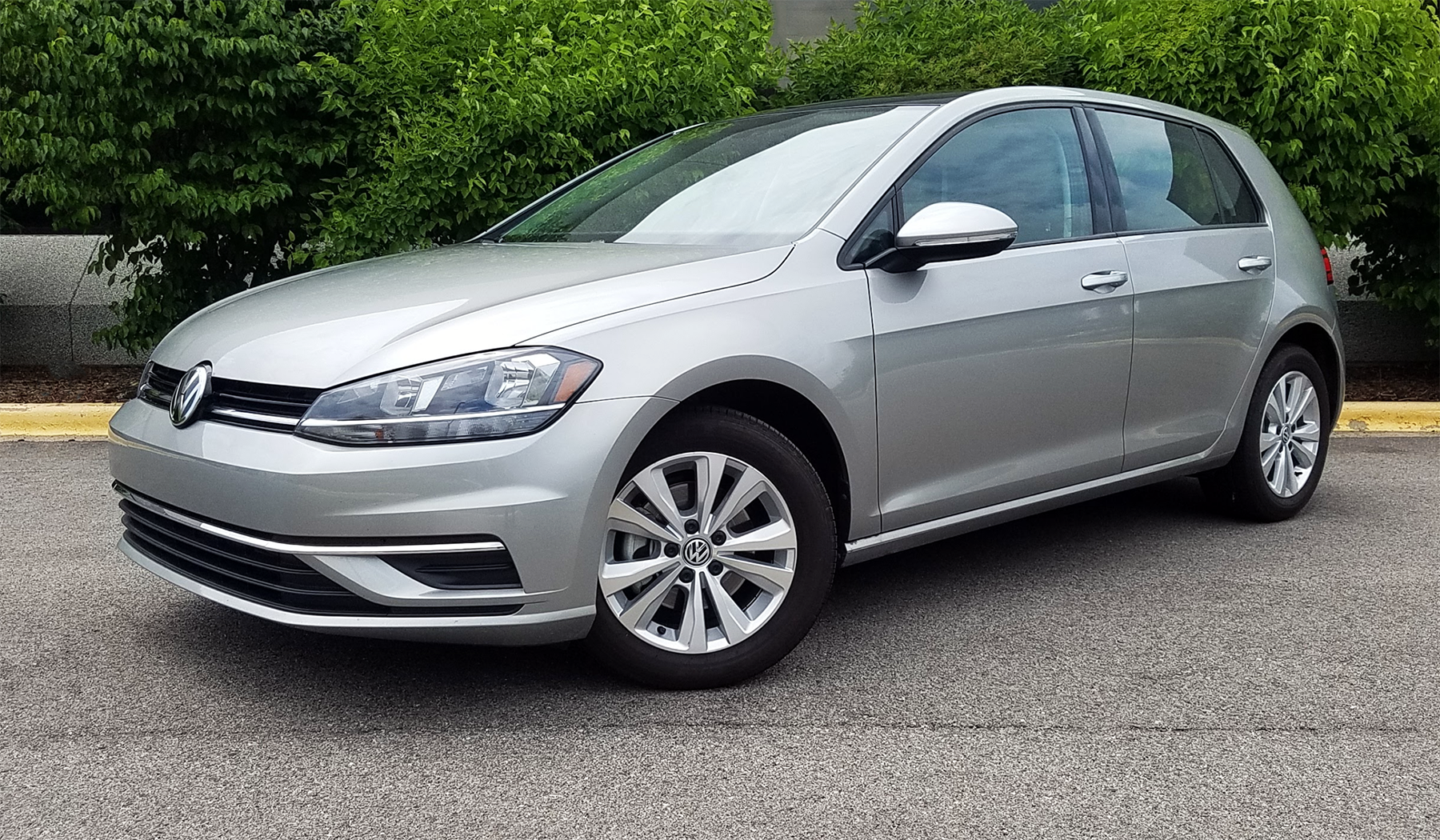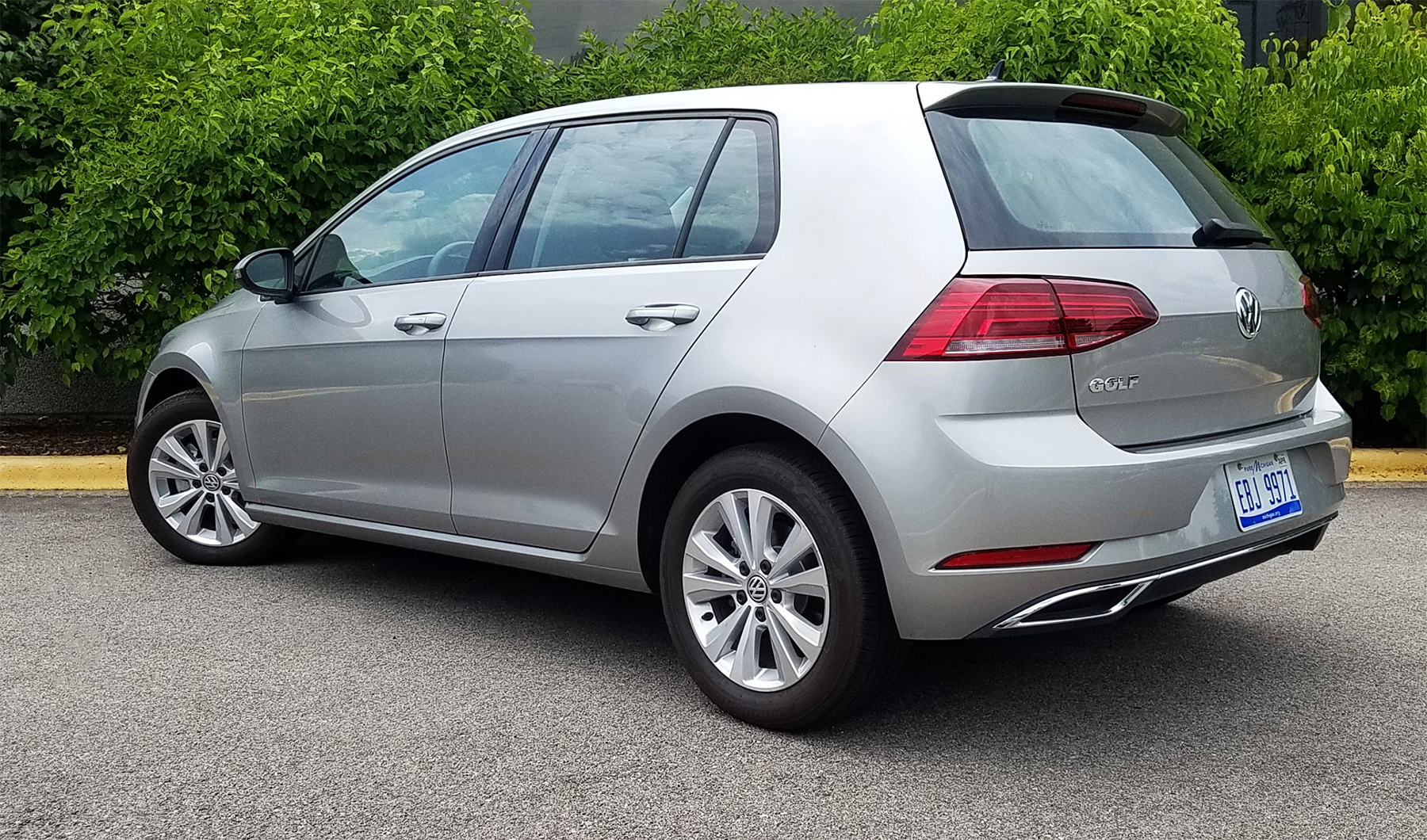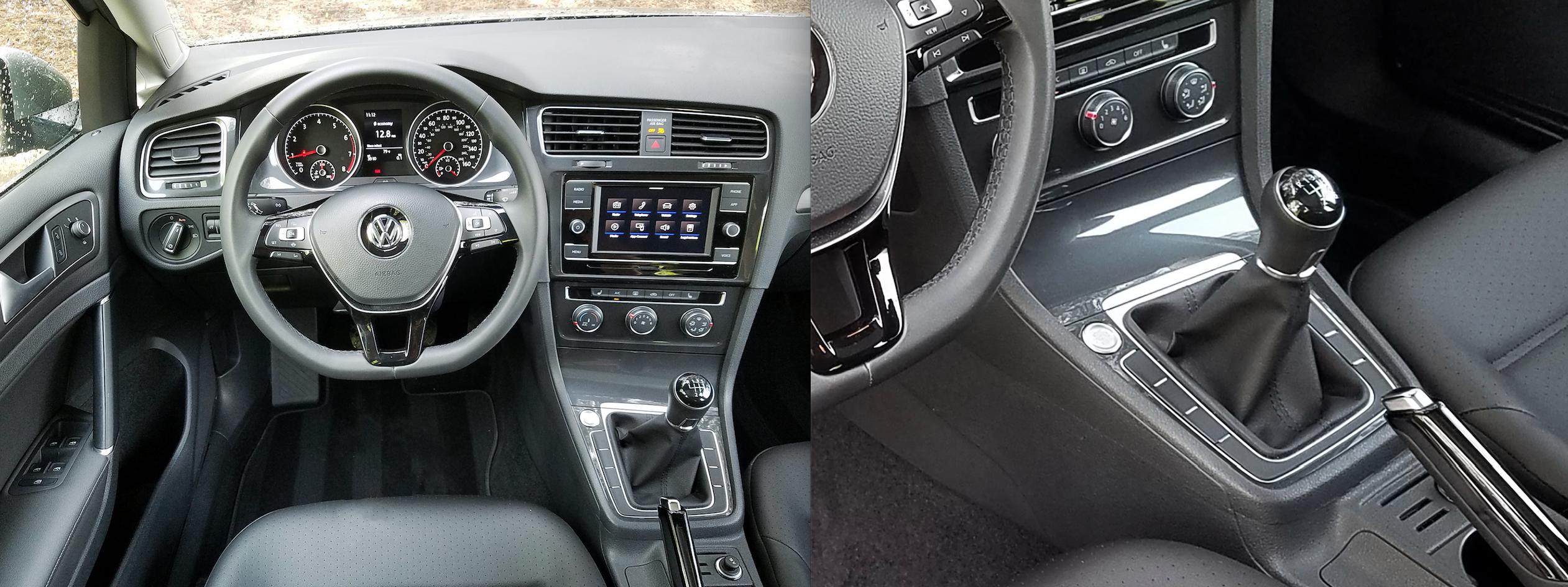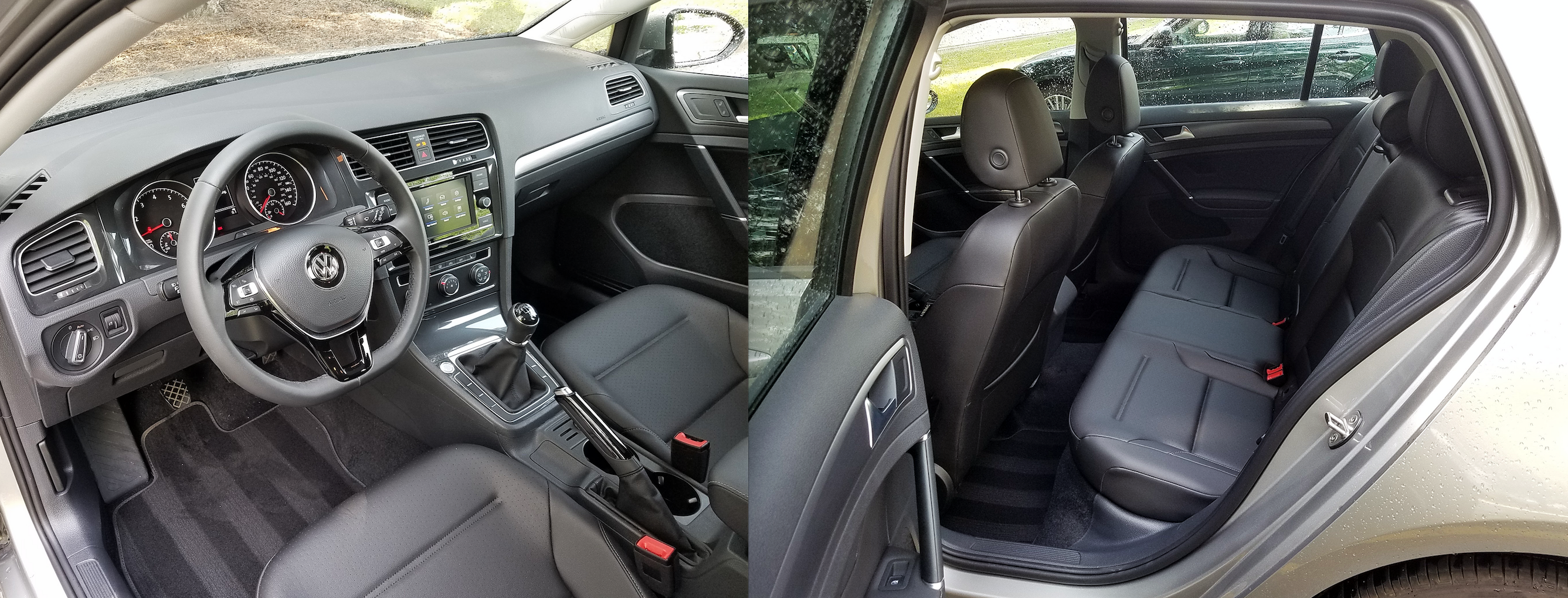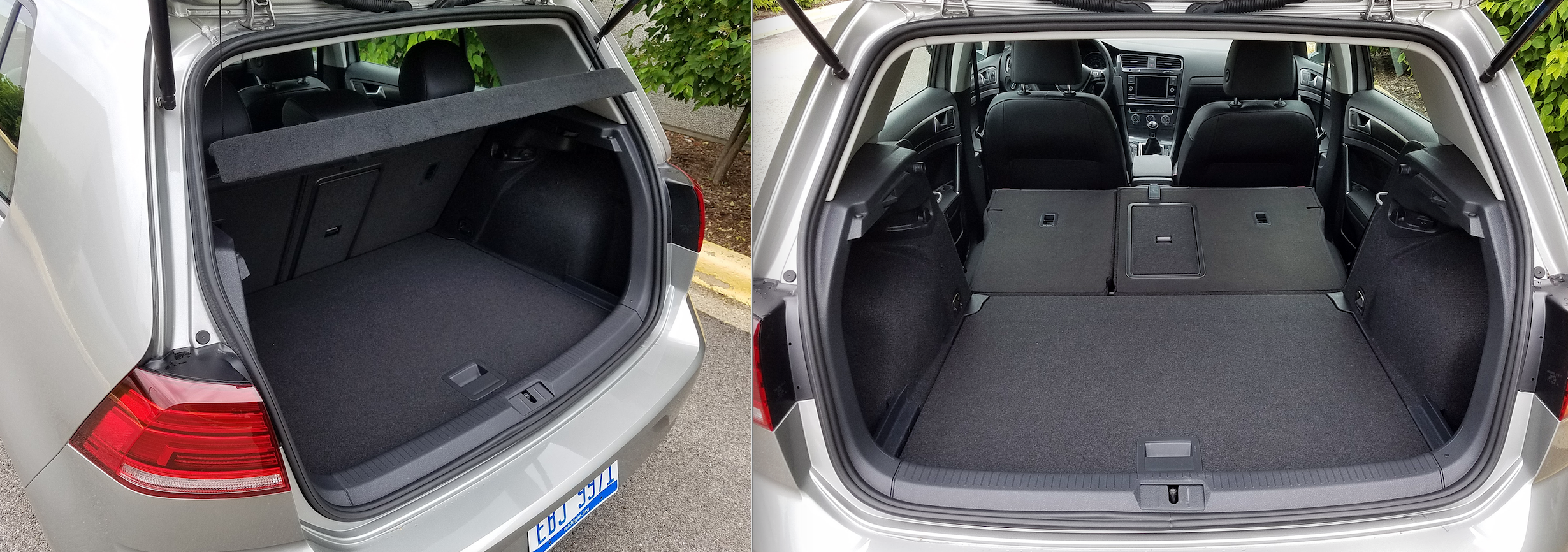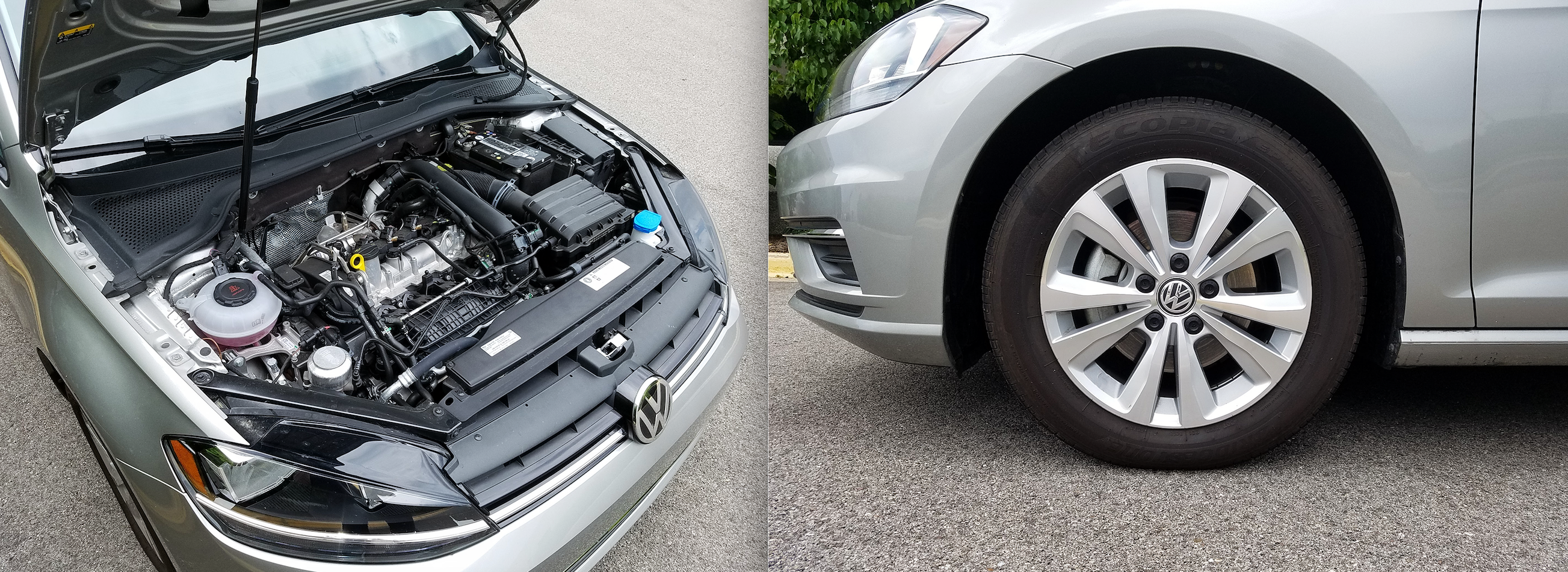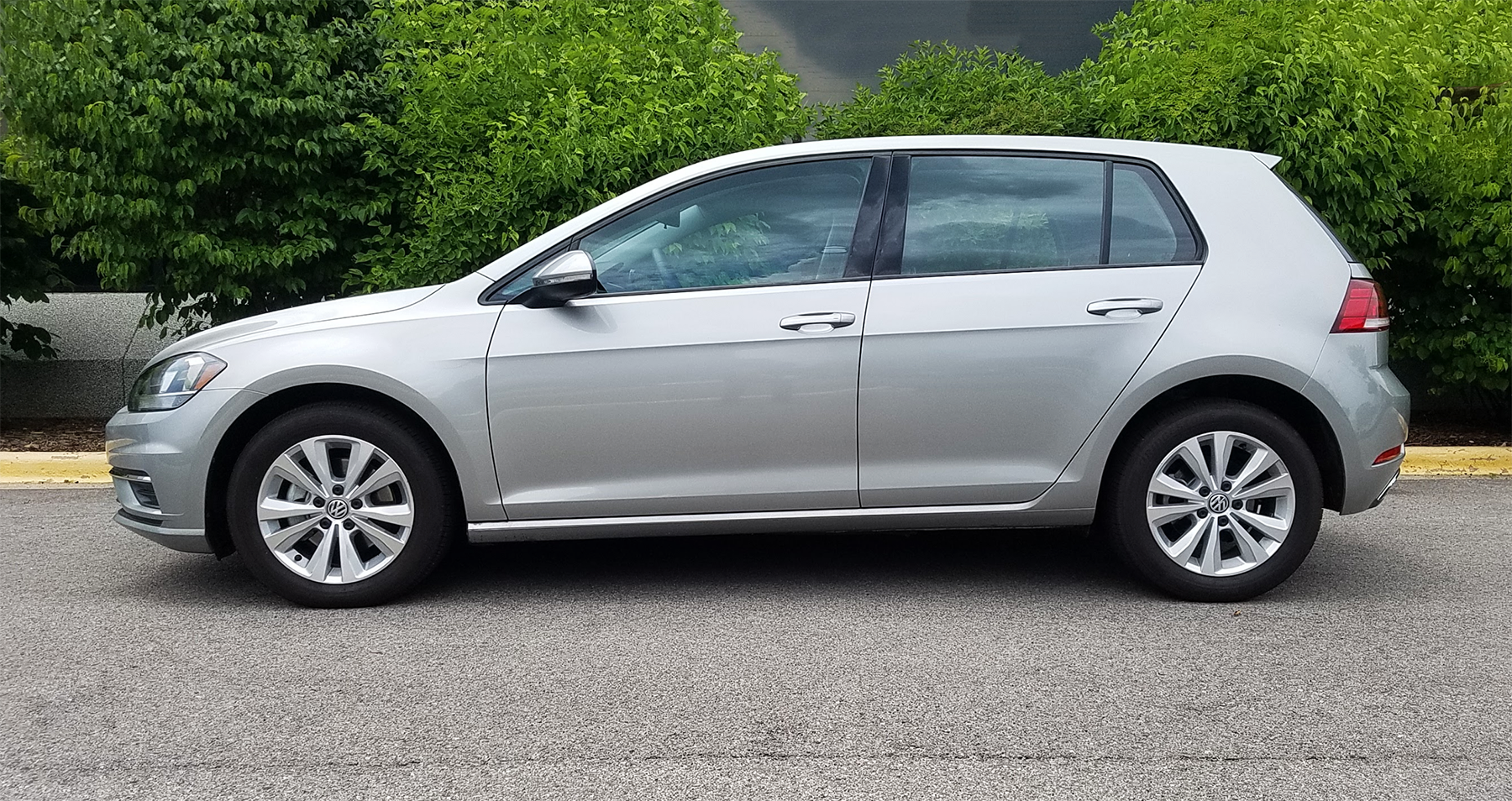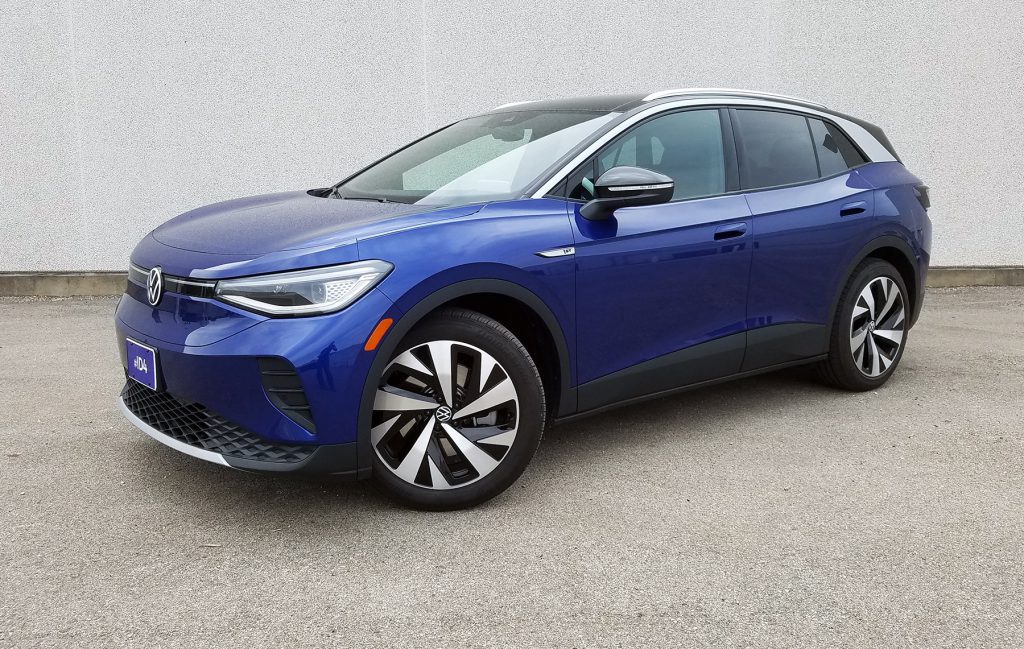
2021 Volkswagen ID.4 1st Edition in Dusk Blue with Black roof

2021 Volkswagen ID.4 1st Edition
Class: Electric Vehicle
Miles driven: 430
Battery capacity: 82 kWh
| CG Report Card | |
|---|---|
| Room and Comfort | A- |
| Power and Performance | B- |
| Fit and Finish | B- |
| Fuel Economy | A |
| Value | B- |
| Report-card grades are derived from a consensus of test-driver evaluations. All grades are versus other vehicles in the same class. Value grade is for specific trim level evaluated, and may not reflect Consumer Guide’s impressions of the entire model lineup. | |
| Big & Tall Comfort | |
| Big Guy | A |
| Tall Guy | A |
| Big & Tall comfort ratings are for front seats only. “Big” rating based on male tester weighing approximately 350 pounds, “Tall” rating based on 6’6″-tall male tester. | |
| Drivetrain | |
| Engine Specs | 201 horsepower |
| Engine Type | Electric motor |
| Transmission | Automatic |
| Drive | Rear-wheel drive |
EPA-estimate MPGe: 104 city/89 hwy/97 combined
EPA-estimated driving range: 250 miles
Consumer Guide range estimate (ideal conditions): 250+ miles
Base price: $43,995 (not including $1195 destination charge)
Options on test vehicle: none
Price as tested: $45,190
Quick Hits
The great: Excellent passenger and cargo room within tidy exterior dimensions; generous selection of standard safety and technology features
The good: Competitive driving range; pleasant everyday driving manners
The not so good: Relentlessly unconventional control layout with non-intuitive infotainment interface; potential for first-of-its-kind teething problems; some so-so interior materials
More ID.4 price and availability information
John Biel
From the fine folks who made diesel a dirty word now comes electricity.
Volkswagen charges—pun intended—headlong into its future with the 2021 ID.4, the first vehicle built from its modular EV “toolkit” to reach America. While bigger and smaller IDs are available in other markets around the world, the 4 dives right into that current hotbed of U.S. auto retailing, the compact-crossover-SUV segment. It is roomy and decently rangy, but the most memorable thing that Consumer Guide editors took away from the ID.4 driving experience (and not in a good way) was from the infotainment interface.
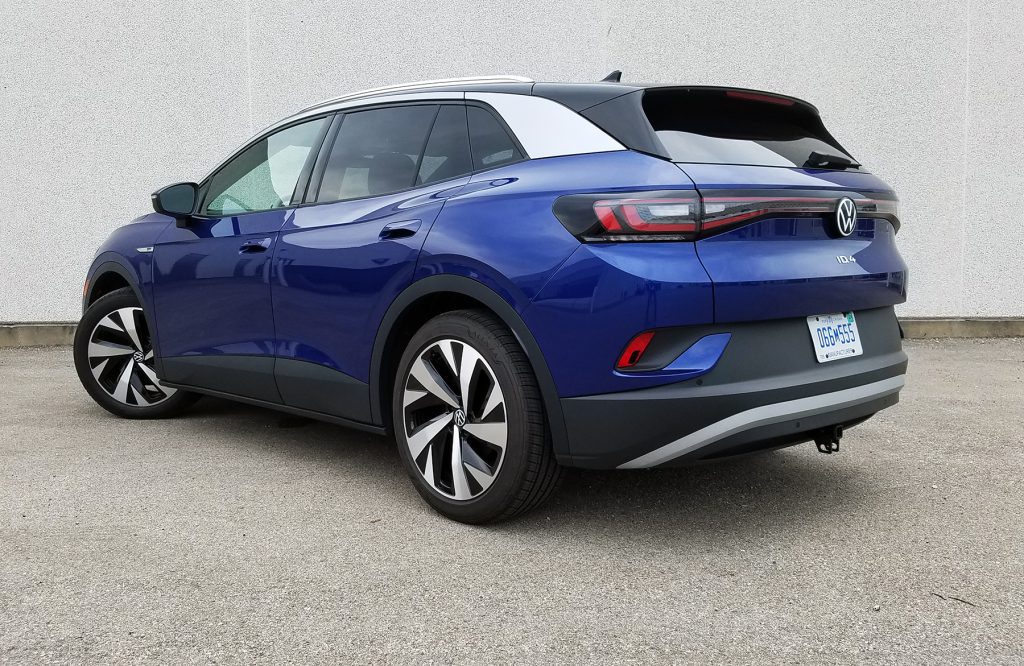
The new-for-2021 ID.4 is the first designed-from-the-ground-up electric vehicle that Volkswagen has offered in the United States. It’s a space-efficient compact crossover SUV that offers about the same amount of passenger space as Volkswagen’s conventional Tiguan SUV, despite being 4.6 inches shorter in overall length.
The ID.4 is not the first EV-dubya to make landfall in the States. That, of course, was the e-Golf, which was sold here from 2015 to 2019. But it is the first to come on a platform—the MEB—designed from scratch for electrics, and the first to be sold nationally. Even then you won’t be trolling dealer lots for one with your pick of colors and equipment. ID.4s are built on a “reservation” basis—somewhat like Teslas—with future owners being notified of their vehicle’s progress from assembly through to arrival at the dealership. (Unlike Tesla, VW continues to involve its network of local dealers in the ID sales process.)
ID.4 launched in rear-wheel-drive Pro and limited 1st Edition versions, at respective base prices, with delivery, of $41,190 and $45,190. A Pro S starts at $45,690, and twin-motor all-wheel-drive for the two Pro models adds $3680. CG tested a Black-over-Dusk Blue 1st Edition with no extra-cost additions.
Consumer Guide Car Stuff Podcast, Episode 88: EV-Startup Reality Check, Underrated Cars
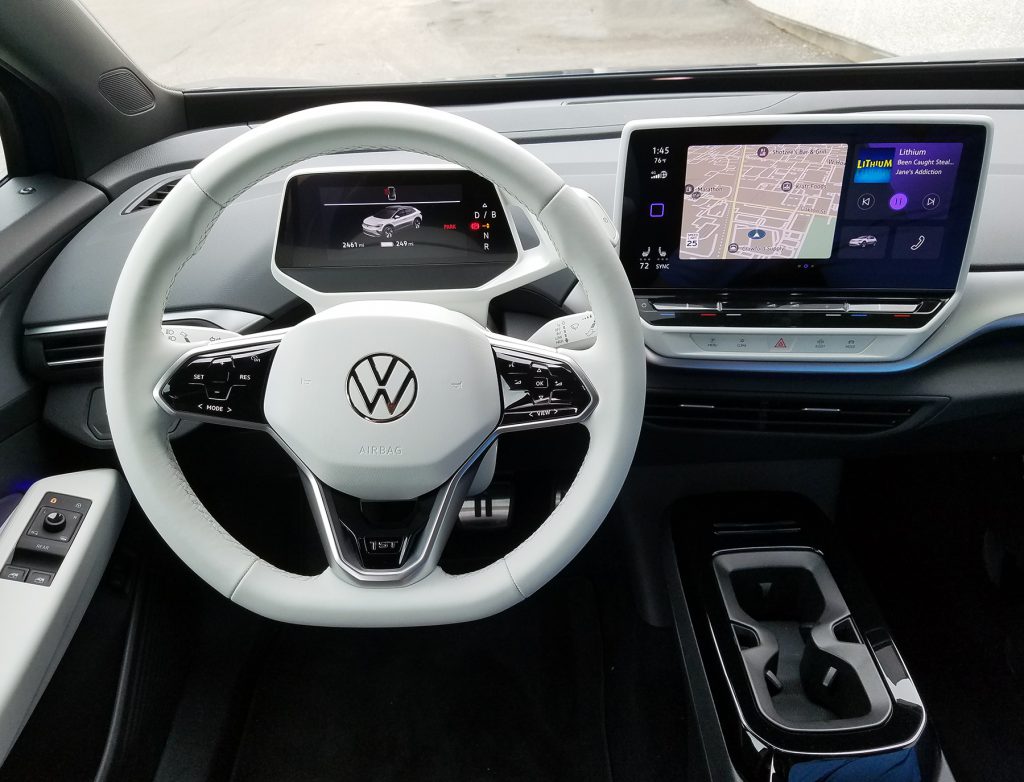
All ID.4s get a fully digital gauge cluster. The launch-special 1st Edition models come standard with a 12-inch infotainment touchscreen, along with exclusive trim touches such as white interior accents (including the steering wheel and gauge cluster), and cheeky “play” and “pause” emblems on the throttle and brake pedals.
A wheelbase of 108.9 inches is long for the class. The expanse between the wheel centers is occupied by a lithium-ion battery pack of 82 gross kWh and a 201-horsepower electric motor that drives the rear wheels directly behind it. (With AWD, output is 302 horsepower.) Though one of the oft-mentioned benefits of electrics is the instant availability of their maximum torque, the rear-drive ID.4 doesn’t pack gobs of it—a modest 229 lb-ft. It’s enough for safe and sound operation and a towing capacity of 2200 pounds, but no real excitement. It is, of course, deathly quiet in operation. Ride on the fully independent suspension—moderately firm—and handling—easy and direct—seem at the higher end for compact sport-utes, which is almost damning the ID.4 with faint praise.
Test Drive: 2021 Ford Mustang Mach-E

The ID.4’s gear selector is unusual–it’s a twist knob that sprouts out of the right side of the instrument panel. The slim center console houses configurable cupholders, a pair of USB data/charging ports, and a wireless charging pad.
The EPA estimates full-charge range at 250 miles and MPGe at 104 in city driving and 89 on the highway. This driver’s test stint, unfortunately cut short at 62 miles by a flat tire that sidelined the vehicle for a couple days, started with an indicated 96-percent charge and 247 miles of range. With air conditioning in use and 55 percent of driving in city-type conditions, he burned off 23 percent of the available charge, with remaining range just below 200 miles when the vehicle had to be parked—though switching off climate control returned indicated range to 212 miles, leaving open the possibility of overshooting the estimates. A full 240-volt “Level 2” charge should take 7.5 hours. A 120-volt “household” charge cord is a standard-equipment item, but buyers are also provided with three years of free DC “fast charging” through the network of Electrify America stations in which VW invested in recent years as penance for the sin of rigging the emissions testing of its once-beloved turbodiesel engines.
First Spin: 2021 Jeep Wrangler Unlimited 4xe
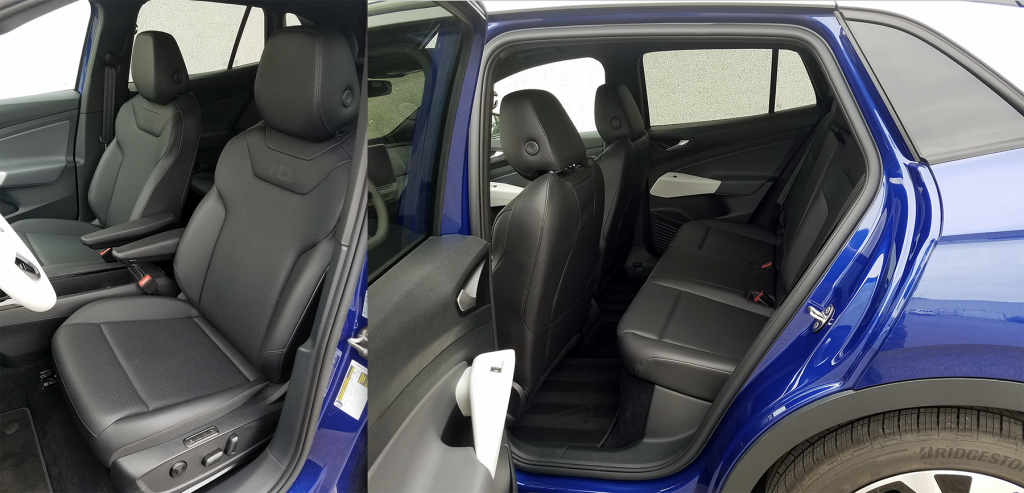
There’s excellent space in both the front and rear seats, with good headroom and legroom for big and tall adults.
Where Volkswagen chose to make the ID.4’s performance feel conventional it did the opposite with the user interface. The Discover Pro Max infotainment system in the test vehicle concentrates audio, climate, navigation, and more on a 12-inch display screen that’s hard to decipher and seems fairly random. (An unlabeled square outlined in purple is the key that unlocks many secrets for those curious enough to wonder, “What does this do?”) Setting radio presets is a game of 3-dimensional chess. Indeed, it’s far easier to undo choices than to make them. Virtually everything happens via haptic contacts that don’t always deliver reassuring feedback. Quick-reach controls for the defrosters aren’t located near the central screen where you might expect; they’re on the pad that holds the light controls to the left of the steering column. The driver has just two power-window buttons. Lowering the rear windows requires activating a haptic button marked “Rear” first. Perhaps the VW Group Vice President for April Fool’s Day Jokes had a hand in this.
Test Drive: 2021 Nissan Leaf SL Plus
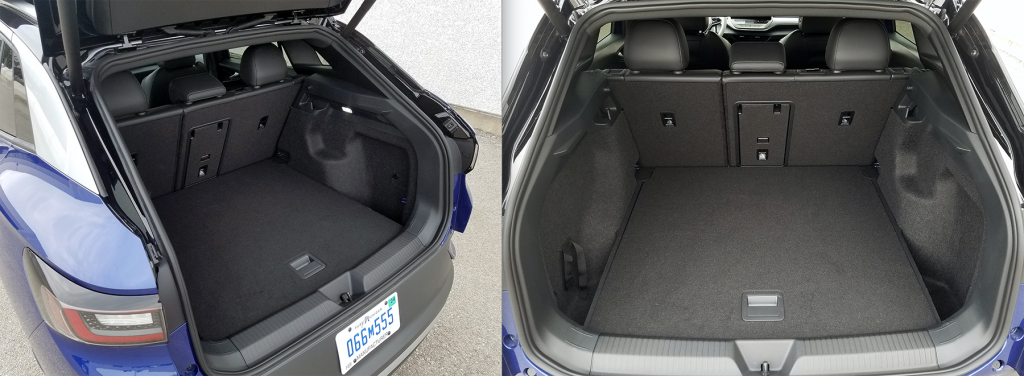
There’s 30.3 cubic feet of cargo volume behind the ID.4’s second-row seats, which grows to 64.2 cu. ft. with the rear seats folded–those numbers are on par with the smaller entrants in the compact SUV class.
We would gladly trade interface weirdness for one-pedal driving. Higher-level regenerative braking—but not enough to fully stop the vehicle—is available by activating “B” mode on the drive selector that sprouts from the instrument pad in front of the driver. Other standards include “ID. Light”—a multicolored LED light strip at the base of the windshield that uses glowing visual and acoustic cues to call attention to things like incoming calls, brake warnings, and charge level—and an “IQ.DRIVE” suite of driver-assist features that includes adaptive cruise control, lane-keeping assist, forward-collision assist with autonomous emergency braking, and blind-spot and rear cross-traffic alerts.
Quick Spin: 2020 Mini Cooper SE Hardtop
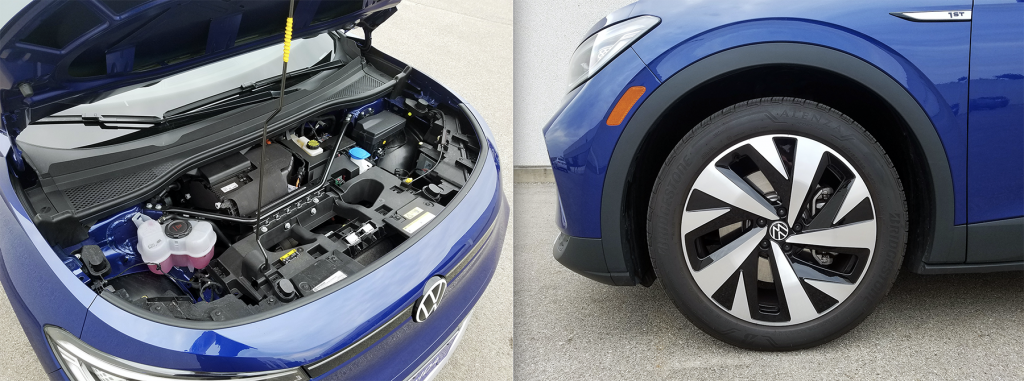
Unlike the Ford Mustang Mach-E, there’s no supplemental “frunk” storage space under the ID.4’s hood. The 1st Edition model comes with 20-inch alloy wheels in place of the 19s that are standard on other ID.4s.
There is good head- and legroom in both rows, the flat floor lets you entertain thoughts of squeezing three lithe adults—certainly three kids—across the back seat. The low console has a bin for storage, USB ports, and wireless charging under a retracting cover. There are pouches on the backs of the front seats, pockets in the doors, and cup holders in the console and pull-down rear armrest. Still, the cabin is a little stark with large-grain plastics and little soft-touch material. (A white steering wheel/column and armrests put some spark in the test truck, but these details are peculiar to the sold-out 1st Edition model.)
First Look: 2022 Chevrolet Bolt EV and 2022 Chevrolet Bolt EUV
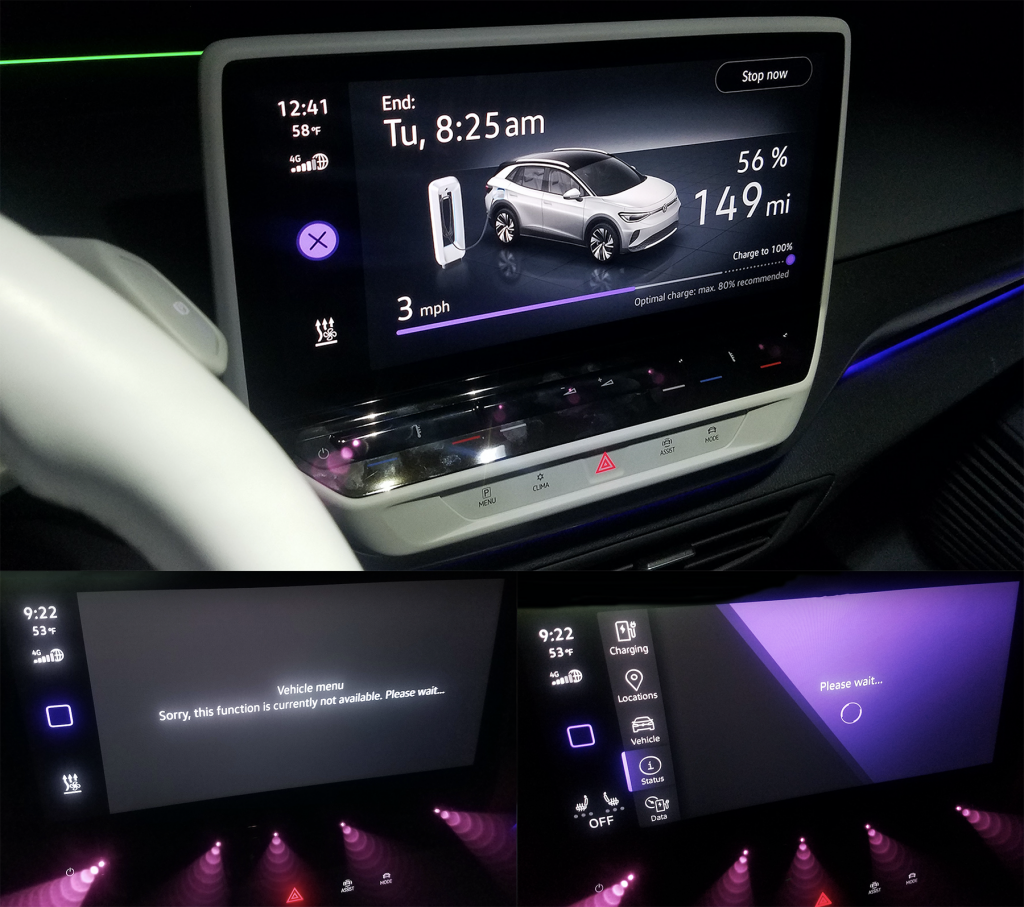
The ID.4 uses an infotainment system that’s completely different from other VWs, and not always for the better. We found the interface non-intuitive, and the touch-sensitive controls finicky. The infotainment system’s functions were often slow to load as well (the purple lights below the screen in these photos are the touch sensors).
Generous cargo space—as much as 64.2 cubic feet with the rear seats folded—exists on a floor that can be set at bumper height or inserted into a lower track for additional load-space depth. Rear 60/40 seats fold flush with the floor when at bumper height, and there is a central pass-through behind the rear armrest. Cubbies at the sides of the cargo floor restrain small items.
Volkswagen hopes it has made an electric compact SUV that behaves the way consumers expect a compact ute to behave for a price—after federal EV credits—that will seem “normal” too. But there’s enough different going on in the ID.4 to make it clear it’s not from out of the past.
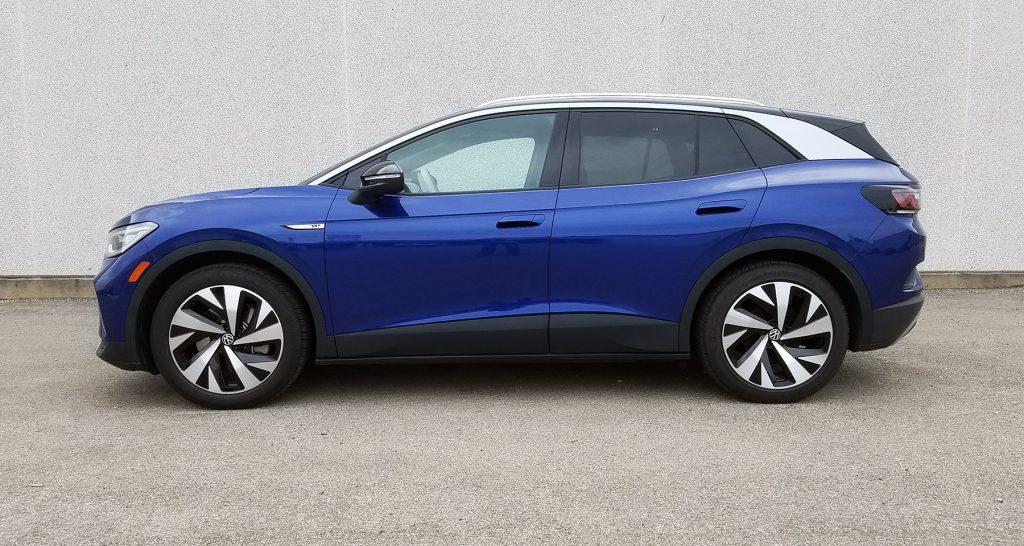
The ID.4 boasts a comfortable, space-efficient cabin and pleasant, everyday-commuter driving manners that make it a practical package. However, it’s plagued by several “unconventional for the sake of unconventional” control interfaces that we found frustrating and annoying, and didn’t fully acclimate to during our two-week test period.
Check out the Consumer Guide Car Stuff Podcast
2021 Volkswagen ID.4 1st Edition Gallery
(Click below for enlarged images)
